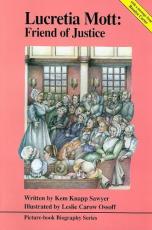Tenacious and persistent—these are our stories. Two current exhibits, one in Jamestown, Virginia, and the other in Washington, D.C., underscore women’s role women in changing the course of American history. All that tenacity and all that persistence have made a difference.
At Jamestown, “Tenacity: Women in Jamestown and Early Virginia,” draws much-deserved and long overdue attention to the women of Jamestown. The exhibit is part of “American Evolution,” Jamestown’s commemoration of the 400th anniversary of “events in Virginia which continue to define America.” Among them are:
• the first representative legislative body. Granted its members included only adult white males (who were not indentured).
• the arrival of the first recorded Africans to Virginia
• the recruitment of 147 English women to Jamestown in November of 1619
“Tenacity” tells their personal stories—those of the English women found husbands, gave birth, raised families, took on domestic duties, ran small dairies and breweries, and were accused of witchcraft. Of Cockacoeske, leader of the Pamunkey, who ruled for thirty years until her death—asserting the rights of her tribe while negotiating with the Virginia settlers. And of Angelo, born in a village in the kingdom of Ndongo in Angola, who was captured by the Portuguese and put on a ship bound for Mexico—only to arrive in Jamestown after English privateers take command
These women, we are told, pushed boundaries and “challenged the status quo by living a life less ordinary. What my 5- and 10-year old companions were drawn to most were the video presentations—reenactments of the lives of these women, many of them young and all of them taking enormous risks and leaps of faith while facing uncertain futures. All a testimony to quiet bravery.
Closer to home, the National Portrait Gallery has mounted an exhibit titled “Votes for Women: A Portrait of Persistence,” a history of the American suffrage movement from 1832 to 1920. Leading the pack is Lucretia Mott, the subject of my first biography, and the woman who together with Elizabeth Cady Stanton organized the Woman’s Rights Convention in 1848. She was an abolitionist, a pacifist, and “no advocate of passivity.”
Many of the women to whom the exhibit pays well-deserved homage were familiar: Sojourner Truth, Lucy Stone, Mary Church Terrell, Ida B. Wells-Barnett, Harriet Tubman, Alice Stone Blackwell, Carrie Chapman Catt, Alice Paul and Jeannette Rankin.
Others were not—among them, Zitkala-Sa, a pioneer for Indian rights activists, who attended government schools and Amy Kirby Post, a Quaker whose house served as a station on the Underground Railroad. And Anna Elizabeth Dickinson, photographed by Mathew Brady, an orator who earned $23,000 in 1872 (more than her contemporary Mark Twain).
Also featured was footage from protests outside the White House showing women carrying banners with messages to President Woodrow Wilson: “Mr. President, you say ‘liberty is the fundamental demand of the human spirit” and “Mr. President, how long must women wait for liberty?”
Words from a 1911 suffrage parade are given special prominence: “Forward out of darkness. Leave Behind the night. Forward out of error. Forward into light.”
It’s a stunning exhibit—text-heavy with a lot to absorb and a lot to take in. My fourteen-year old companion wanted to read every word. For that I was grateful.
We should not have gone upstairs before calling it a day. On the second floor, we took a quick walk-through of the “Presidential Portraits” exhibit one floor up. Forty-four portraits and not one of them a woman. Something has to change.
(Both exhibits will close January 5, 2020.)

